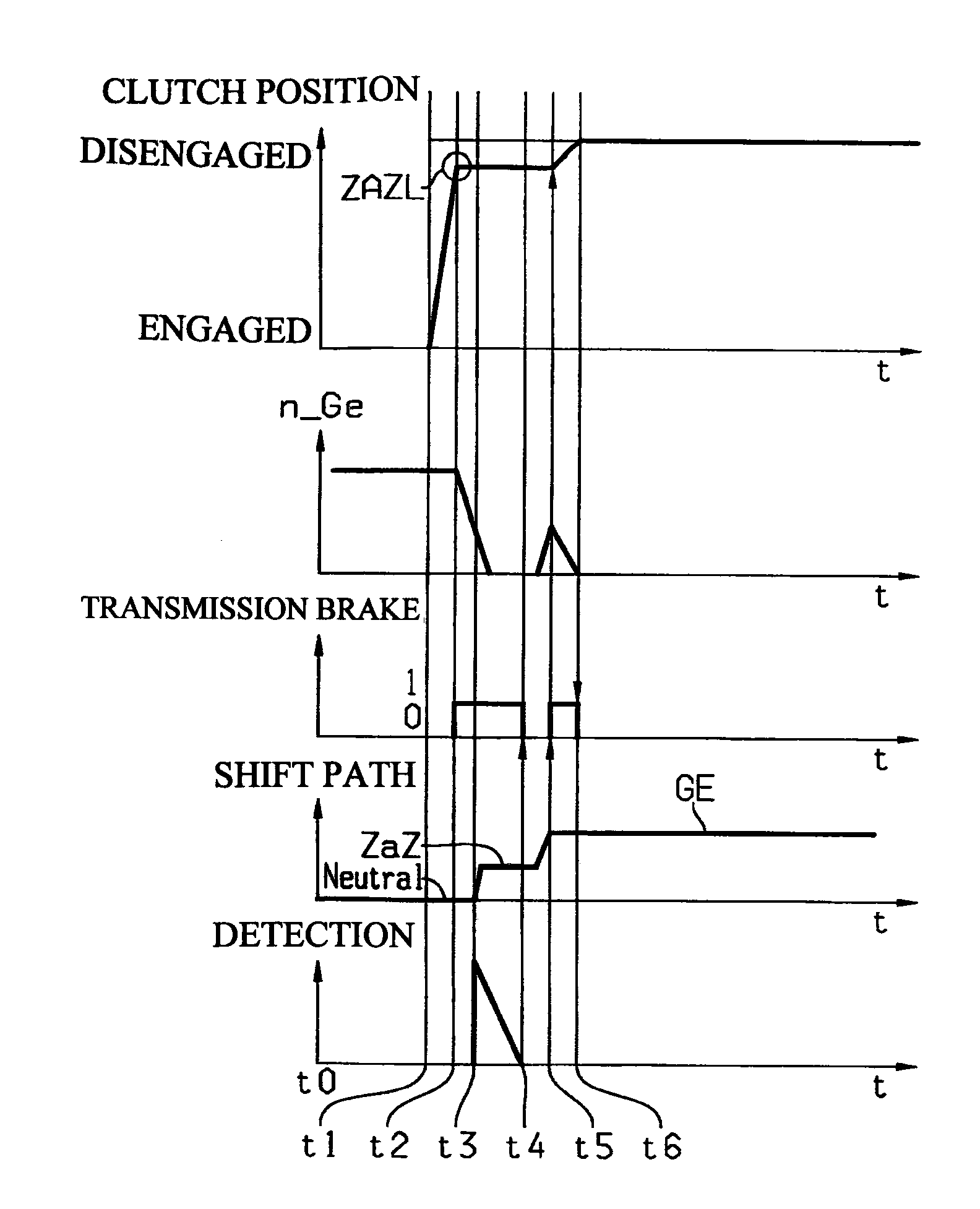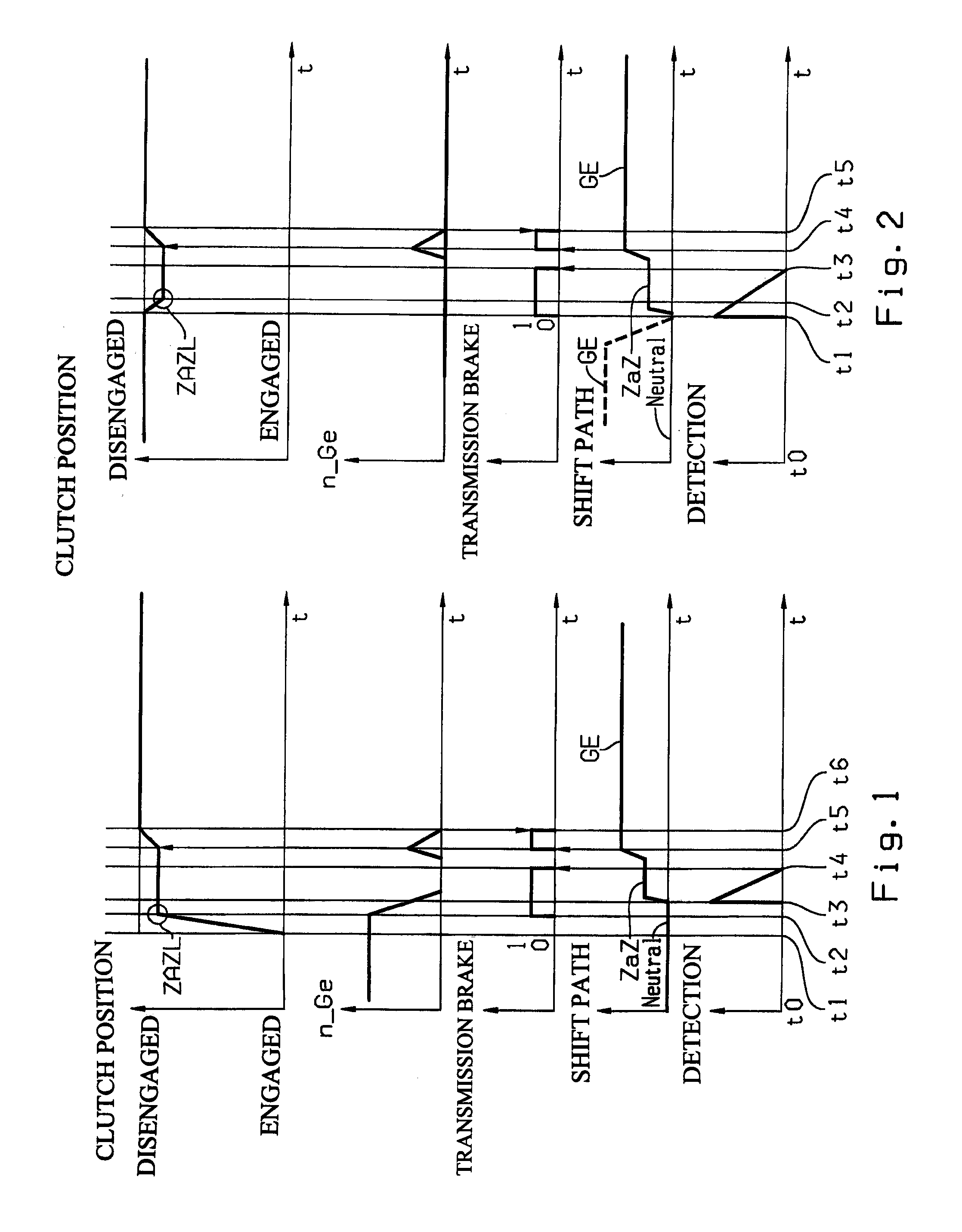Method for overcoming tooth butt conditions when engaging gears in transmissions
a transmission gear and gearing technology, applied in the direction of gearing control, gearing element, belt/chain/gearing, etc., can solve the problems of limited efficiency of this approach without simultaneously beveling the face end, large production expenditure, and torque to be transferred by the clutch
- Summary
- Abstract
- Description
- Claims
- Application Information
AI Technical Summary
Benefits of technology
Problems solved by technology
Method used
Image
Examples
Embodiment Construction
[0051]The method according to the present invention may be used in a motor vehicle with a drive train largely known from FIGS. 1 and 2 of U.S. Pat. No. 6,769,523 B2 discussed at the beginning. In that case, the drive engine of the vehicle is connected to a manual transmission via a clutch. In addition, a transmission brake is available in the drive train by means of which the transmission drive shaft may at least be decelerated. The actuation of the clutch and the transmission brake as well as of the transmission actuators and coupling means to be activated by a pressurizing medium required for a gear shift are controlled by an electronic control unit.
[0052]This control unit also serves as a detection mechanism for detecting tooth abutment conditions of gear wheels and / or of gear wheels with allocated coupling means in the transmission, has related assessment programs and is connected to the sensors required for this purpose. Besides, a control program for overcoming tooth abutment ...
PUM
 Login to View More
Login to View More Abstract
Description
Claims
Application Information
 Login to View More
Login to View More - R&D
- Intellectual Property
- Life Sciences
- Materials
- Tech Scout
- Unparalleled Data Quality
- Higher Quality Content
- 60% Fewer Hallucinations
Browse by: Latest US Patents, China's latest patents, Technical Efficacy Thesaurus, Application Domain, Technology Topic, Popular Technical Reports.
© 2025 PatSnap. All rights reserved.Legal|Privacy policy|Modern Slavery Act Transparency Statement|Sitemap|About US| Contact US: help@patsnap.com


